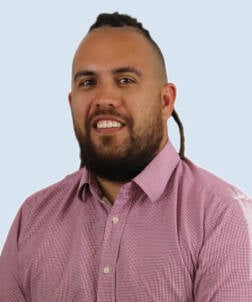OUR
INSIGHTS
OUR
SOLUTION
PROJECT
CHALLENGES
PROJECT
DESCRIPTION
Te Ahu a Turanga: Manawatū Tararua Highway
Prioritising sensitive local ecology and stakeholder engagement leads to a groundbreaking new state highway across the Manawatū and Tararua.

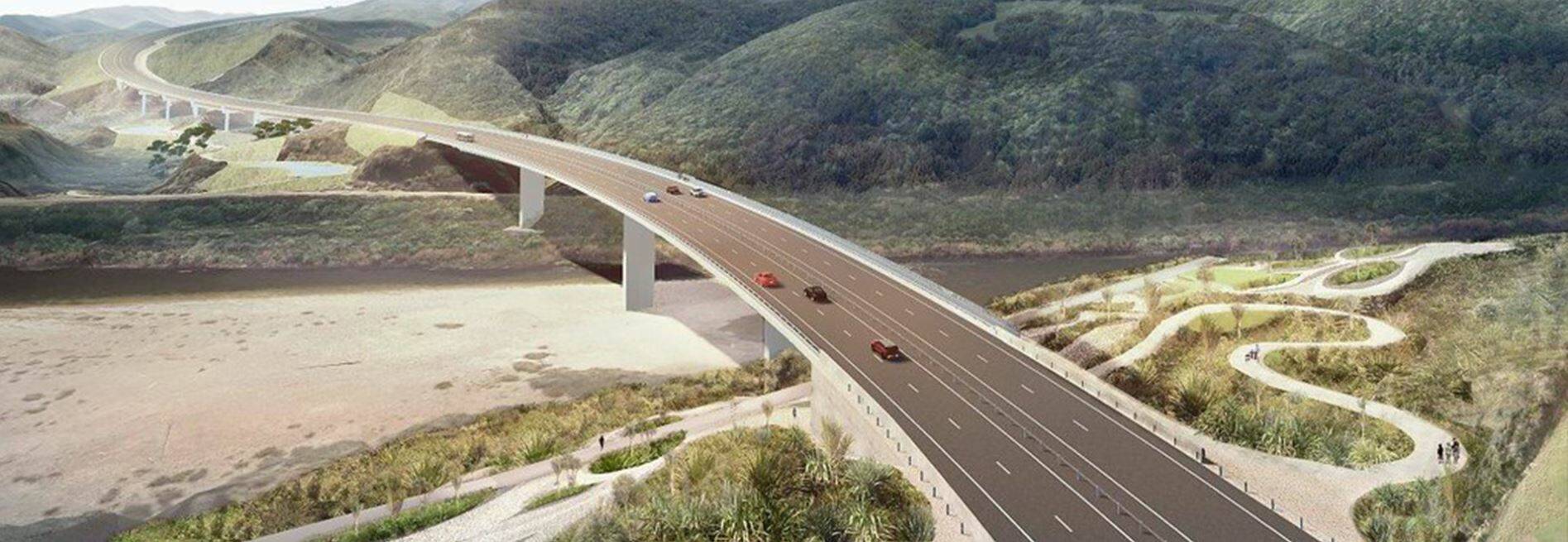
Back to home page




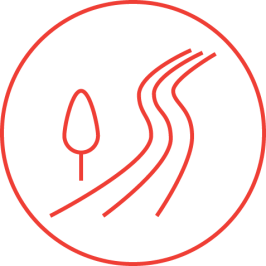
Alliance partners
Fulton Hogan, HEB Construction and Aurecon
WSP Project Team
Project Alliance Board Member: Keryn Kliskey
WSP Project Director: Mark Marshall
WSP Project Manager: Michael Chan
Design Manager: Michael Chan
Geometrics Lead: Gayathri Sankar
Construction Phase Services Lead: Wayne Stewart
Sustainability: Kate Chivers/Rowan Dixon
Planning/Consents/Iwi engagement (pre Alliance): Kumeroa Pihama
Archaeology: Patrick Harsvedlt
Roads Lead: Road Engineering: Sara Mura
Stormwater & Hydraulics: Josh Irvine
Pavements: Moumy Dsarma
ITS: Paul Addy
Lighting: Andy Collins
Utilities & Power: Kristen Jensen
Client
Waka Kotahi
In April 2017, severe weather caused major slips on State Highway 3 (SH3) through the Manawatū Gorge. This is a major route connecting the Manawatū, Tararua, Hawke’s Bay and northern Wairarapa Districts.
The road was closed and traffic was diverted via local roads which are not of State Highway standard, increasing risk of accidents and travel times. A safe, resilient and efficient replacement transport route was required.
350 workers at any one time
6 bridges along the route
2 million new trees and plants
11.5km of road
PROJECT DESCRIPTION
Back to home page


PROJECT CHALLENGES
Our client, Waka Kotahi NZ Transport Agency, proposed a new 11.5km route for SH3 connecting with SH57 south of Ashhurst and SH2 west of Woodville. The route presents several challenges: it travels through high-value and sensitive ecological areas, an operating wind farm, and crosses multiple seismic faults. Minimising impacts on ecology, windfarm operations and maintenance, and managing landowner and stakeholder expectations are essential to this project.
Back to home page

Together with our Alliance partners, (Fulton Hogan, HEB, Aurecon and Waka Kotahi) we proposed a route that was partially outside the original Notice of Requirement designation to minimise impact on the ecology of the area, while also avoiding the decommissioning of any wind turbines. Our team’s design incorporates improvements to make the road more resilient during earthquakes and slips, provides ecological enhancements and develops new community facilities.
The new road will have a traffic lane and a crawler lane in each direction over most of the route, separated by a median strip and new bridge crossing the Manawatū River. The route includes separated walking and cycling facilities. Currently our team, including iwi partners Rangitāne o Manawatū, Rangitāne o Tamaki Nui-a-Rua, Ngāti Kahungunu and Ngāti Raukawa have worked together to refine the road’s design and incorporate mahi toi.
Our team has completed consenting activities and designing enabling works. Construction commenced in the summer of 2020/21. It is scheduled to be completed in December 2024.
OUR SOLUTION
Back to home page

OUR
INSIGHTS

Scroll for more
Back to Our Insights

Genuinely inclusive governance played a crucial role in the success of the Te Ahu a Turanga project, establishing the core principles of community co-design, iwi involvement, and sustainability. Keryn was the Project Alliance Board Member for WSP and worked with the governance body to form a truly impactful Alliance.
The Project Alliance Board consisted of the client, partners, stakeholders and local iwi groups, who were intensively involved in co-designing the project. Collectively the Board agreed on a “tread lightly” project philosophy in both the design and construction methodologies.
Initially this involved proposing a route partially outside the initial Notice of Requirement designation, designed to reduce negative impact on the local ecology and avoid decommissioning any existing wind turbines from the Te Apiti farm. The alternative route also increased the likelihood of land-use designations and resource consents being passed without time-consuming appeals.
Iwi were also integrated into the management and broader project team levels on the project. In a first for a transport infrastructure project in Aotearoa New Zealand, the Alliance took a “whānau first” approach to Health, Safety and Wellbeing.
Key features of the culture developed in the project incorporated key elements of te ao Māori, including haumaru (being deliberate while working), hauora (being at optimal mental and physical condition) and ora (being mindful and engaged).
The significance of the Alliance approach was recognised at a hui on a local marae with a presentation of a Project Waka, representing the project values and principles.
Keryn says that genuine and representation of iwi across all layers of the project will have benefits far beyond the project. “Partnering with local iwi has promoted co-design, local upskilling and sourcing, and therefore left a local legacy”.
“It has also led to a culture where people and their whānau have an increased capability to own and improve their safety, health and wellbeing”.
While the Alliance Partners have largely resourced the project from their NZ based personnel, additional specialist expertise has been mobilized from Australia and the USA using online working tools.
Keryn is keen to take the benefits learned from the Alliance into subsequent projects. The inclusive governance model meant that the diverse groups were agreed on project objectives and commercial outcomes. In turn, this supported robust and informed decision making and a smooth consent process, which enabled this large-scale project to start on time and move at pace. With more than 500,000 cubic metres of earthworks completed in the first construction season (reduced) we are well placed for the challenge of approx. 5,500,000 cubic metres in future seasons.
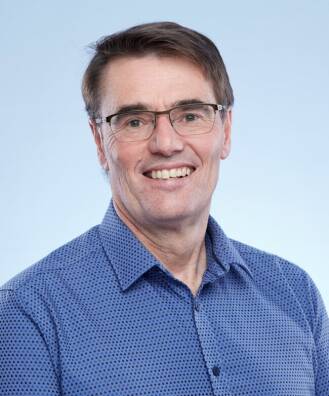
GOVERNANCE LEAD: KERYN KLISKEY
Scroll for more
Back to Our Insights

WSP undertook stormwater design and hydraulic modelling services [IJ1] for the new road alignment and Josh led a design team that delivered culvert and stream channel solutions for the complex project.
Key design challenges included the requirement for a parallel design and consenting process, the proximity of the Te Āpiti wind farm and the steep topography. Innovative design, associated with the nature of the steep terrain and high fill embankments, was required for a number of design elements, including induced trenching and energy dissipation for some culverts.
Overall Josh’s team designed 40 culverts, 30 re-aligned streams and 90 cut-off drains across the project, as part of the wider drainage team.
“This involved ensuring that the deep culverts will withstand the weight of the very high embankments, that water is safely conveyed underneath the highway and will be free of flooding, facilitating fish passage and ensuring streams retain ecological value. This had to be done while minimising any impact on the environment, implementing Te Ao Māori values and working with the other disciplines to resolve potential clashes and integrate the wider design.”
Meeting these challenges required innovative thinking. Josh says the use of drop structures for culverts, induced trenching and void filled riprap, was particularly pioneering as it’s an uncommon use in New Zealand. This approach resulted in reduced costs, a reduced earthwork footprint and increased ecological and environmental benefits.
A standout of the project for Josh was the experience of working with the people and industry experts within the Alliance.
“The amount of design required for projects of this scale is significant, but with great technical expertise, leadership and collaborative working, projects can be successfully delivered with great community outcomes. The incorporation of Te Ao Māori values into the design process and the visit to the Te Hotu Manawa O Rangitaane O Manawatū Marae as an Alliance was also a unique, enlightening and rewarding experience for me,” he says.
More detail on the stormwater design can be found here:
https://www.wsp.com/en-NZ/projects/manawatu-highway-stormwater-design
STORMWATER: JOSH IRVINE
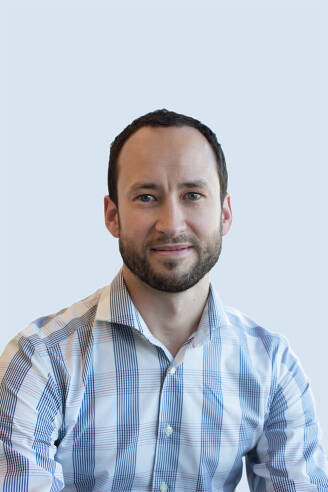
Scroll for more
Back to Our Insights


Geometric design is the backbone of Te Ahu a Turanga project, linking all other design elements like stormwater, geotechnical, earthworks and structures. Gayathri led the design team to produce a coherent alignment for the highway, along with traffic services design. This comprised of design of the state highway and shared use path alignment, barriers, signs and line markings, road lighting and ITS design.
The roading design work delivered some notable positive outcomes including a significantly reduced impact on the ecologically-sensitive QEII covenanted area, avoidance of all windfarm turbines and enhanced safety. Furthermore, considerable construction time savings were realised by ensuring the design aligned with the contractor earthwork strategy. Above all, the team developed a strong design that had safety and environment, client reputation and stakeholder outcomes at the forefront.
Gayathri says that excellent communication was key to achieving these outcomes. Strong and open communication with third parties including the Heavy Vehicle User Group and the Shared Use Path Community Liaison Group meant that feedback was incorporated into modified design wherever possible.
In fact, this extensive interaction and communication with third party helped in finalising the design faster than traditional methods.
This commitment to going above and beyond providing good design was evident throughout the project.
“Within the wider project team, we were proactive in providing assistance with design for other disciplines and worked with the contractor to modify design wherever possible to align with their construction methodology. Our input into construction staging which was a valuable addition,” she says.
Gayathri says the Te Ahu a Turanga Alliance provided a great environment for innovation.
“Our approach to the design minimised consenting impact and avoided impact on the QEII area by redesigning the alignment. This redesign was a total silver bullet idea. Another thing that really stands out is having Iwi as a project partner rather than a stakeholder. All aspects of the design benefitted from this approach and it really helped the design team appreciate Iwi values, which is reflected in the design outputs.”
This included an immersive experience where the design team had a full day induction and overnight stay with Iwi.
“We spent the day learning about their values and having the entire team stay overnight at the marae was a wonderful experience – it’s a memory that will always stay with me .”
ROADS LEAD: GAYATHRI SANKAR
Scroll for more
Back to Our Insights

Te Ahu a Turanga has set a new standard for engagement with Iwi. WSP’s Kumeroa Pihama was engaged in the earliest stages of the project, ensuring the proposed methodology was based on client and Iwi expectations of a new best practice.
Kumeroa says his involvement was during the Alliance bidding process for the project. This included simple terminology, influencing governance and reporting line, and integration of assumed priorities and influence of Iwi throughout disciplines that historically hadn’t been considered. An example of this was moving Health & Safety plans into a wider wellbeing framework that considered staff, family, community and local providers, and a sustainable economy.
Within this was the preparation of the Alliance to work within a new framework and communicating our understanding of the direction the client was moving in with regards to Iwi integration.
The approach has been a game changer and is a fundamental shift in the way Iwi participate in projects.
“Iwi are treaty partners, project partners, project governance, communities and community members,” he says.
Kumeroa says lessons learnt from previous major projects, along with an understanding of the client’s intent, enabled the Alliance to promote previously unexplored opportunities.
“Communicating our understanding enabled further exploration of the methodology implementation across the board, taking a major step towards the partnership in its true sense under Te Tiriti o Waitangi.”
He says there were multiple components to the proposed methodology put forward by the Alliance including:
- Iwi as governance with Waka Kotahi
- Iwi as alliance members
- Iwi as community
- Iwi as implementers
“For me the biggest lesson here is that we have every opportunity to align our activities with the priorities of Iwi and wider community. If we have an ongoing understanding of these priorities, we can start the conversation with a much higher alignment leading to a productive process.”
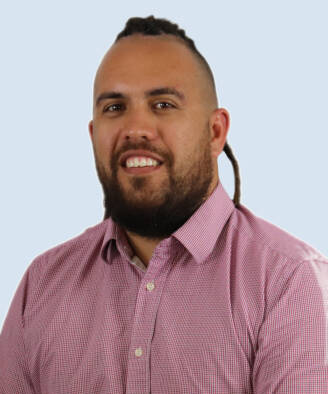
PLANNING ENGAGEMENT: KUMEROA PIHAMA

PROJECT DESCRIPTION
PROJECT CHALLENGES
OUR SOLUTION
OUR INSIGHTS
Prioritising sensitive local ecology and stakeholder engagement leads to a groundbreaking new state highway across the Manawatū and Tararua.
Te Ahu a Turanga: Manawatū Tararua Highway

Client
Waka Kotahi
WSP Project Team
Project Alliance Board Member: Keryn Kliskey
WSP Project Director: Mark Marshall
WSP Project Manager: Michael Chan
Design Manager: Michael Chan
Geometrics Lead: Gayathri Sankar
Construction Phase Services Lead:
Wayne Stewart
Sustainability: Kate Chivers/Rowan Dixon
Planning/Consents/Iwi engagement
(pre Alliance): Kumeroa Pihama
Archaeology: Patrick Harsvedlt
Roads Lead: Road Engineering: Sara Mura
Stormwater & Hydraulics: Josh Irvine
Pavements: Moumy Dsarma
ITS: Paul Addy
Lighting: Andy Collins
Utilities & Power: Kristen Jensen
Alliance partners
Fulton Hogan, HEB Construction and Aurecon

350 workers at any one time
6 bridges along the route
2 million new trees and plants
11.5km of road
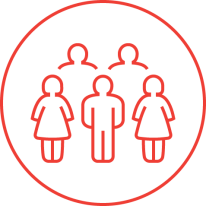
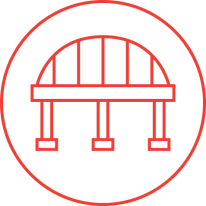

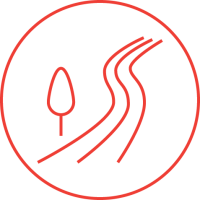
In April 2017, severe weather caused major slips on State Highway 3 (SH3) through the Manawatū Gorge. This is a major route connecting the Manawatū, Tararua, Hawke’s Bay and northern Wairarapa Districts.
The road was closed and traffic was diverted via local roads which are not of State Highway standard, increasing risk of accidents and travel times. A safe, resilient and efficient replacement transport route was required.
PROJECT DESCRIPTION

PROJECT CHALLENGES
Our client, Waka Kotahi NZ Transport Agency, proposed a new 11.5km route for SH3 connecting with SH57 south of Ashhurst and SH2 west of Woodville. The route presents several challenges: it travels through high-value and sensitive ecological areas, an operating wind farm, and crosses multiple seismic faults. Minimising impacts on ecology, windfarm operations and maintenance, and managing landowner and stakeholder expectations are essential to this project.
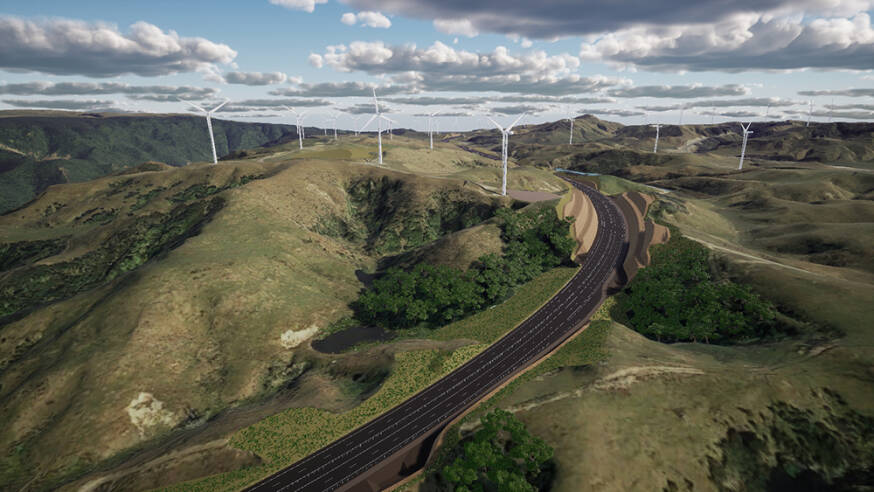

Together with our Alliance partners, (Fulton Hogan, HEB, Aurecon and Waka Kotahi) we proposed a route that was partially outside the original Notice of Requirement designation to minimise impact on the ecology of the area, while also avoiding the decommissioning of any wind turbines. Our team’s design incorporates improvements to make the road more resilient during earthquakes and slips, provides ecological enhancements and develops new community facilities.
The new road will have a traffic lane and a crawler lane in each direction over most of the route, separated by a median strip and new bridge crossing the Manawatū River. The route includes separated walking and cycling facilities. Currently our team, including iwi partners Rangitāne o Manawatū, Rangitāne o Tamaki Nui-a-Rua, Ngāti Kahungunu and Ngāti Raukawa have worked together to refine the road’s design and incorporate mahi toi.
Our team has completed consenting activities and designing enabling works. Construction commenced in the summer of 2020/21. It is scheduled to be completed in December 2024.
OUR SOLUTION


OUR
INSIGHTS

Genuinely inclusive governance played a crucial role in the success of the Te Ahu a Turanga project, establishing the core principles of community co-design, iwi involvement, and sustainability. Keryn was the Project Alliance Board Member for WSP and worked with the governance body to form a truly impactful Alliance.
The Project Alliance Board consisted of the client, partners, stakeholders and local iwi groups, who were intensively involved in co-designing the project. Collectively the Board agreed on a “tread lightly” project philosophy in both the design and construction methodologies.
Initially this involved proposing a route partially outside the initial Notice of Requirement designation, designed to reduce negative impact on the local ecology and avoid decommissioning any existing wind turbines from the Te Apiti farm. The alternative route also increased the likelihood of land-use designations and resource consents being passed without time-consuming appeals.
Iwi were also integrated into the management and broader project team levels on the project. In a first for a transport infrastructure project in Aotearoa New Zealand, the Alliance took a “whānau first” approach to Health, Safety and Wellbeing.
Key features of the culture developed in the project incorporated key elements of te ao Māori, including haumaru (being deliberate while working), hauora (being at optimal mental and physical condition) and ora (being mindful and engaged).
The significance of the Alliance approach was recognised at a hui on a local marae with a presentation of a Project Waka, representing the project values and principles.
Keryn says that genuine and representation of iwi across all layers of the project will have benefits far beyond the project. “Partnering with local iwi has promoted co-design, local upskilling and sourcing, and therefore left a local legacy”.
“It has also led to a culture where people and their whānau have an increased capability to own and improve their safety, health and wellbeing”.
While the Alliance Partners have largely resourced the project from their NZ based personnel, additional specialist expertise has been mobilized from Australia and the USA using online working tools.
Keryn is keen to take the benefits learned from the Alliance into subsequent projects. The inclusive governance model meant that the diverse groups were agreed on project objectives and commercial outcomes. In turn, this supported robust and informed decision making and a smooth consent process, which enabled this large-scale project to start on time and move at pace. With more than 500,000 cubic metres of earthworks completed in the first construction season (reduced) we are well placed for the challenge of approx. 5,500,000 cubic metres in future seasons.
GOVERNANCE LEAD: KERYN KLISKEY


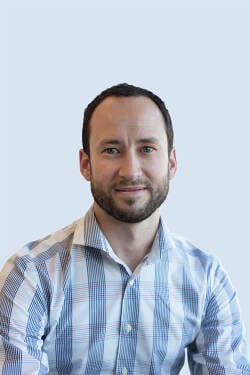
WSP undertook stormwater design and hydraulic modelling services [IJ1] for the new road alignment and Josh led a design team that delivered culvert and stream channel solutions for the complex project.
Key design challenges included the requirement for a parallel design and consenting process, the proximity of the Te Āpiti wind farm and the steep topography. Innovative design, associated with the nature of the steep terrain and high fill embankments, was required for a number of design elements, including induced trenching and energy dissipation for some culverts.
Overall Josh’s team designed 40 culverts, 30 re-aligned streams and 90 cut-off drains across the project, as part of the wider drainage team.
“This involved ensuring that the deep culverts will withstand the weight of the very high embankments, that water is safely conveyed underneath the highway and will be free of flooding, facilitating fish passage and ensuring streams retain ecological value. This had to be done while minimising any impact on the environment, implementing Te Ao Māori values and working with the other disciplines to resolve potential clashes and integrate the wider design.”
Meeting these challenges required innovative thinking. Josh says the use of drop structures for culverts, induced trenching and void filled riprap, was particularly pioneering as it’s an uncommon use in New Zealand. This approach resulted in reduced costs, a reduced earthwork footprint and increased ecological and environmental benefits.
A standout of the project for Josh was the experience of working with the people and industry experts within the Alliance.
“The amount of design required for projects of this scale is significant, but with great technical expertise, leadership and collaborative working, projects can be successfully delivered with great community outcomes. The incorporation of Te Ao Māori values into the design process and the visit to the Te Hotu Manawa O Rangitaane O Manawatū Marae as an Alliance was also a unique, enlightening and rewarding experience for me,” he says.
More detail on the stormwater design can be found here:
https://www.wsp.com/en-NZ/projects/manawatu-highway-stormwater-design
STORMWATER: JOSH IRVINE
Geometric design is the backbone of Te Ahu a Turanga project, linking all other design elements like stormwater, geotechnical, earthworks and structures. Gayathri led the design team to produce a coherent alignment for the highway, along with traffic services design. This comprised of design of the state highway and shared use path alignment, barriers, signs and line markings, road lighting and ITS design.
The roading design work delivered some notable positive outcomes including a significantly reduced impact on the ecologically-sensitive QEII covenanted area, avoidance of all windfarm turbines and enhanced safety. Furthermore, considerable construction time savings were realised by ensuring the design aligned with the contractor earthwork strategy. Above all, the team developed a strong design that had safety and environment, client reputation and stakeholder outcomes at the forefront.
Gayathri says that excellent communication was key to achieving these outcomes. Strong and open communication with third parties including the Heavy Vehicle User Group and the Shared Use Path Community Liaison Group meant that feedback was incorporated into modified design wherever possible.
In fact, this extensive interaction and communication with third party helped in finalising the design faster than traditional methods.
This commitment to going above and beyond providing good design was evident throughout the project.
“Within the wider project team, we were proactive in providing assistance with design for other disciplines and worked with the contractor to modify design wherever possible to align with their construction methodology. Our input into construction staging which was a valuable addition,” she says.
Gayathri says the Te Ahu a Turanga Alliance provided a great environment for innovation.
“Our approach to the design minimised consenting impact and avoided impact on the QEII area by redesigning the alignment. This redesign was a total silver bullet idea. Another thing that really stands out is having Iwi as a project partner rather than a stakeholder. All aspects of the design benefitted from this approach and it really helped the design team appreciate Iwi values, which is reflected in the design outputs.”
This included an immersive experience where the design team had a full day induction and overnight stay with Iwi.
“We spent the day learning about their values and having the entire team stay overnight at the marae was a wonderful experience – it’s a memory that will always stay with me .”

ROADS LEAD: GAYATHRI SANKAR

Back to Our Insights

Te Ahu a Turanga has set a new standard for engagement with Iwi. WSP’s Kumeroa Pihama was engaged in the earliest stages of the project, ensuring the proposed methodology was based on client and Iwi expectations of a new best practice.
Kumeroa says his involvement was during the Alliance bidding process for the project. This included simple terminology, influencing governance and reporting line, and integration of assumed priorities and influence of Iwi throughout disciplines that historically hadn’t been considered. An example of this was moving Health & Safety plans into a wider wellbeing framework that considered staff, family, community and local providers, and a sustainable economy.
Within this was the preparation of the Alliance to work within a new framework and communicating our understanding of the direction the client was moving in with regards to Iwi integration.
The approach has been a game changer and is a fundamental shift in the way Iwi participate in projects.
“Iwi are treaty partners, project partners, project governance, communities and community members,” he says.
Kumeroa says lessons learnt from previous major projects, along with an understanding of the client’s intent, enabled the Alliance to promote previously unexplored opportunities.
“Communicating our understanding enabled further exploration of the methodology implementation across the board, taking a major step towards the partnership in its true sense under Te Tiriti o Waitangi.”
He says there were multiple components to the proposed methodology put forward by the Alliance including:
- Iwi as governance with Waka Kotahi
- Iwi as alliance members
- Iwi as community
- Iwi as implementers
“For me the biggest lesson here is that we have every opportunity to align our activities with the priorities of Iwi and wider community. If we have an ongoing understanding of these priorities, we can start the conversation with a much higher alignment leading to a productive process.”
PLANNING ENGAGEMENT: KUMEROA PIHAMA
